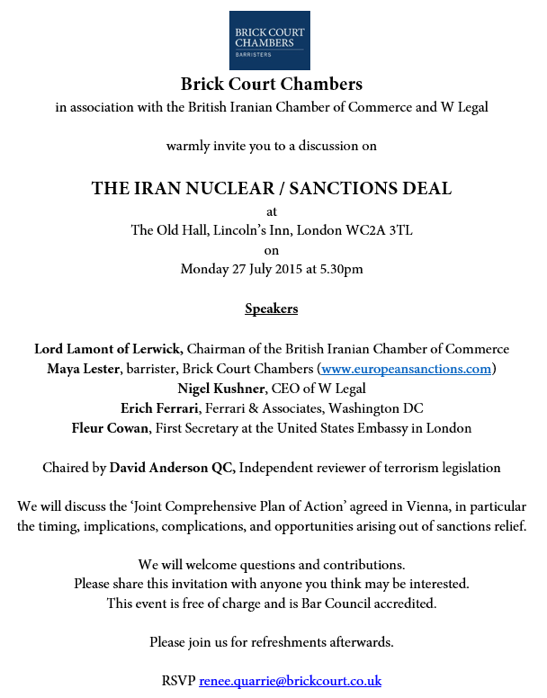Is Canada Opting for the EU Model for Iran Sanctions?
In the wake of the nuclear agreement between the U.S., other major world powers, and Iran (otherwise known as the Joint Comprehensive Plan of Action), two distinct models for Iran-related sanctions have resurfaced.
On the one hand, there is the U.S. model. Under this model, there is deployed both a comprehensive trade and investment embargo that prohibits those falling under U.S. jurisdiction from engaging in most transactions with Iran or Iranian parties, as well as a targeted sanctions regime that aims at discrete Iranian persons or entities involved in activities judged anathema to U.S. foreign policy interests. That is why we have the Iranian Transactions and Sanctions Regulations (“ITSR”), 31 C.F.R. Part 560, which implements the U.S. trade embargo with Iran, as well as other miscellaneous sanctions – e.g., Executive Orders 13224 and 13382 – which target specific activities in which Iranian or Iran-related actors are engaged.
On the other hand, there is the EU model. Under the EU model, there is no comprehensive trade and investment embargo limiting the activities of European parties with Iran or Iranian persons. Instead, there is a targeted sanctions regime that aims at particular activities engaged in by the Iranian government or its officials, subjecting such designated persons or entities for blocking and other trade-related sanctions. Targeted activities include Iran’s support for terrorism and its human rights abuses.
Then there is Canada. For a while after the implementation of the JCPOA, it was unclear which model Canada would adopt – particularly under its new liberal administration. Until yesterday, Canada arguably had a more severe position towards Iran than even the United States – as the U.S. had authorized certain trade-related dealings, notably the sale of commercial aircraft and related parts to Iran, as part of the nuclear agreement, while Canada had taken no real steps to roll-back – even in a limited manner – its Iran sanctions program. Boeing would have an earlier takeoff than Bombardier — or so it seemed.
But Tuesday brought with it word that Canada’s government would indeed seek to undo many of the sanctions that it currently imposes on Iran. The precise scope of these changes remains undetermined, but from what I have heard and understand – especially the strong remarks of Canada’s Foreign Minister Stephane Dion in Parliament – Canada’s new government will seek to adopt the EU model rather than opt for the U.S. one. (Some prescient Canadian sanctions lawyers also happen to agree with this reading.)
Currently, Canada has two separate sanctions regimes targeting Iran: the Regulations Implementing the United Nations Resolutions on Iran and the Special Economic Measures (Iran) Regulations. The former Regulations impose sanctions on Iran in accord with existing UNSC resolutions targeting the Islamic Republic, while the latter Regulations are unilateral in nature and impose a broad trade embargo with Iran that prohibits most trade-related or other dealings with Iran – much akin to the ITSR in the United States.
While one would expect Canada to revise the Regulations Implementing the United Nations Resolutions on Iran so that they come into accord with the new UNSCR 2231, it is less clear what amendments or revocations the Canadian government will make to the Special Economic Measures (Iran) Regulations. Based on the substance and tenor of the Foreign Minister’s comments in Canada’s Parliament, however, I would not be surprised if those changes were substantial so as to allow Canadian business to fairly compete with their European counterparts for the Iranian market. Doing so, however, would mean adopting the EU model for sanctions.
Should the Canadian government side with the EU model, it could prove a substantial blow to the ultimate sustainability of the U.S. sanctions model. Part of the original justification for the U.S. trade embargo with Iran after all was to convince other countries (particularly Germany and Japan) to adopt similar trade restrictions on their dealings with Iran. But with the advent of the JCPOA, that era seems to have passed, as the Europeans, Japanese, Australians, and others undo their own self-imposed trade restrictions targeting Iran and start to resume business with the Islamic Republic.
Canada’s decision to lift its own trade embargo with Iran, then, could leave the U.S. model the U.S.’s alone, as all other major industrial countries opt for a new era in trade relations with Tehran.



